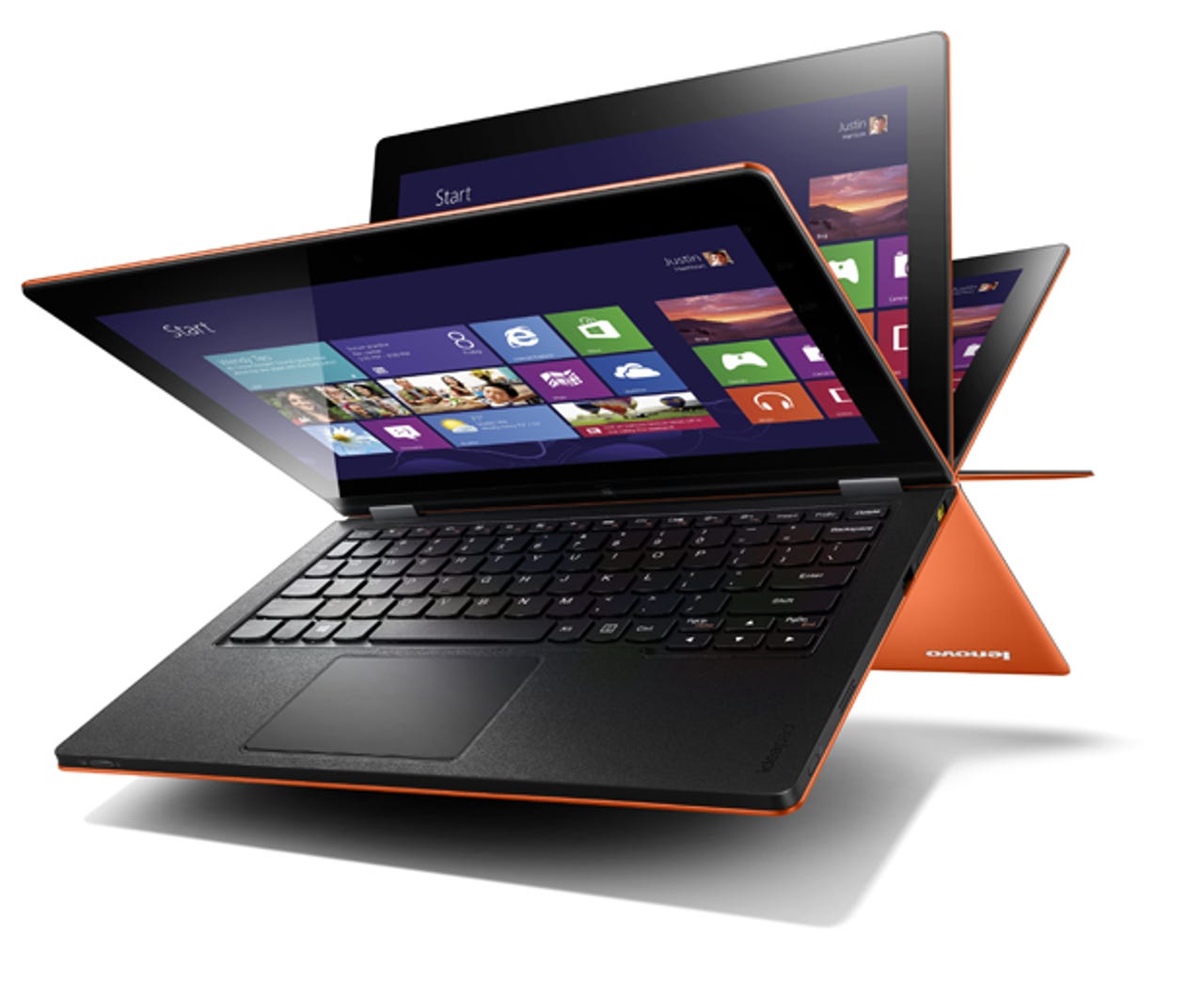Lenovo has Windows 8 convertibles covered with Yoga, Lynx and Twist


There are several different ways to build a laptop that converts into a tablet. Rather than trying to pick one winner, Lenovo has decide to cover them all. At an event in New York last night Lenovo launched its Windows 8 convertibles for consumers and small businesses. In all there are four new hybrids including the unique Lenovo Yoga design.
Photo Gallery: Lenovo's lineup of Windows 8 convertibles
As it turns out there are two Yoga laptops, a 13-inch model running Windows 8 and an 11-inch one running Windows RT, both of which have the display that folds backwards 360 degrees. Unlike more common designs with swiveling or detachable displays, the Yoga works not only in tablet and laptop modes, but also at points in between in "tent" or "stand" modes for viewing content.
The 13-inch (1600x900) model uses Intel's third-generation Core processors, up to 8GB of memory and either a 128- or 256GB solid-state drive (SSD). The Yoga 13 measures 0.7 inches thick and weighs 3.4 pounds. Lenovo claims it will have more than 8 hours of battery life. It will be available when Windows 8 launches, on October 26, starting at $1,099.
The smaller Yoga 11 is based on Nvidia's Tegra 3 and has an 11.6-display (1366x768), up to 2GB of memory and either 32- or 64GB of storage. It is 0.6 inches thick and weighs only 2.8 pounds, yet Lenovo says it will get up to 13 hours of battery life which, if accurate, suggests that this is an area where ARM-based systems will have an edge. Like all Windows RT devices, it will also include Office Home and Student 2013 RT Preview. But at $799 and up, the Yoga 11, which will be available starting in December, is priced more like a full Windows 8 laptop.
The other two convertibles, the IdeaTab Lynx and ThinkPad Twist, are more conventional convertibles. The Lynx has an 11.6 inch (1366 x 768) display that detaches from a keyboard dock to switch to tablet mode. This is the same approach that Acer, Asus, HP and Samsung are taking with their Windows 8 convertibles. The tablet is 0.4 inches thick (about the same as the iPad) and weighs 1.4 pounds; the keyboard adds another 1.5 pounds to the system weight, but it has an extra battery that stretches the battery life to 16 hours, according to Lenovo. The Lynx, which uses Intel's recently-announced Atom Z2760 (Clover Trail) dual-core processor and has 2GB of memory and either 32- or 64GB of storage, starts at $599 and the optional dock is an additional $149. It will be available starting in December. Lenovo previously announced a standalone slate, the ThinkPad Tablet 2, which has similar specs and will start at $649 without a keyboard.
The Twist has a 12.5-inch (1366x768) display that rotates 180 degrees and folds flat. Lenovo has been making Windows convertibles using this design for years and I use one of them, the ThinkPad X Series convertible, every day. The drawback to this design is that it has tended to be bulky, but the Twist is sleeker--at 0.8 inches thick and 3.5 pounds it is small enough to qualify for Intel's Ultrabook designation. Like the Yoga, it works in tent and stand modes. Lenovo rates it for up to 7 hours of battery life. Available at Windows 8 launch, the Twist will start at $849 with a third-generation Core processors, up to 8GB of memory and either a hard drive or 128GB SSD.
It's too early to tell whether with Windows 8 convertibles will finally catch the attention of consumers. But there will certainly be a lot more to choose from, and it will be interesting to see if novel designs like the Yoga or Dell's XPS 12 get some traction. It's worth noting that all of these Lenovo convertibles use a newer chiclet keyboard, rather than the classic ThinkPad keyboard, and most of them lack the iconic red trackpoint. Lenovo may be reasoning that the combination of a touchpad and multi-point touchscreen provides enough modes of input. But personally I'm holding out for a thinner, lighter version of the ThinkPad X230 running Windows 8 Pro with Intel's upcoming Haswell processor.